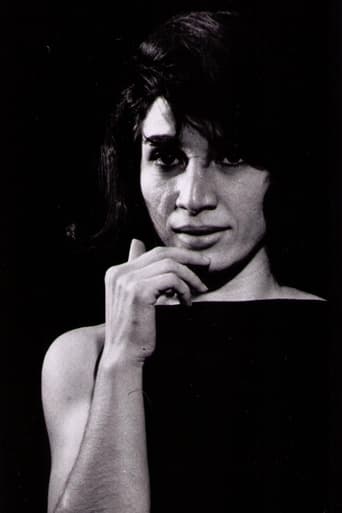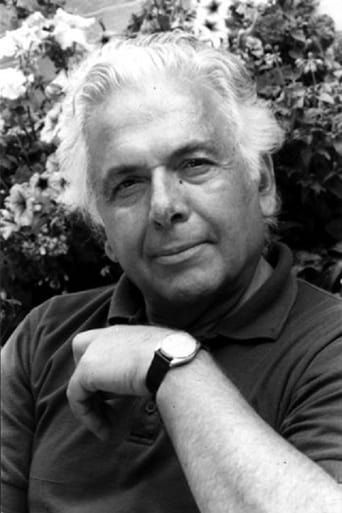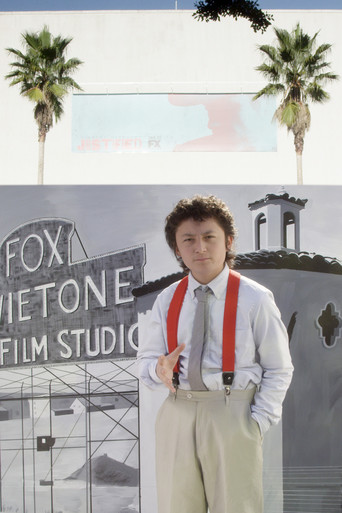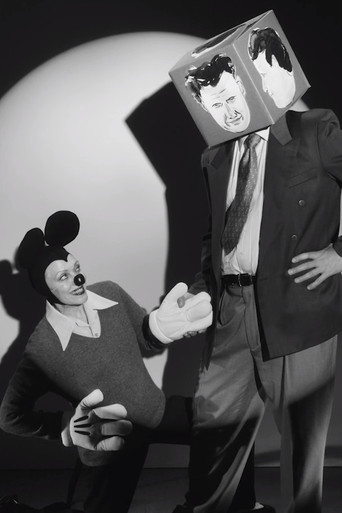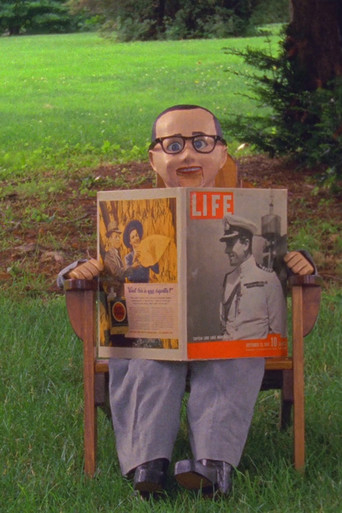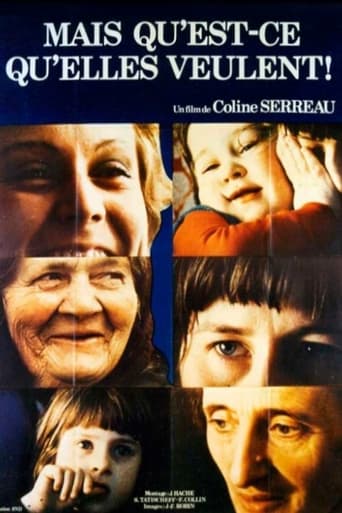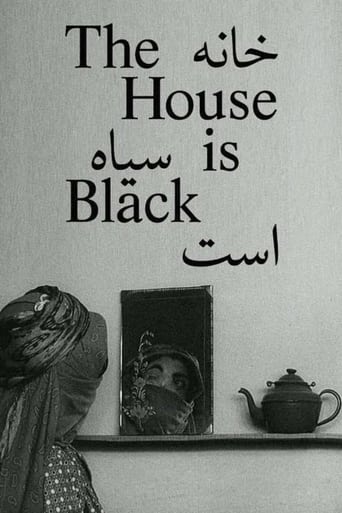
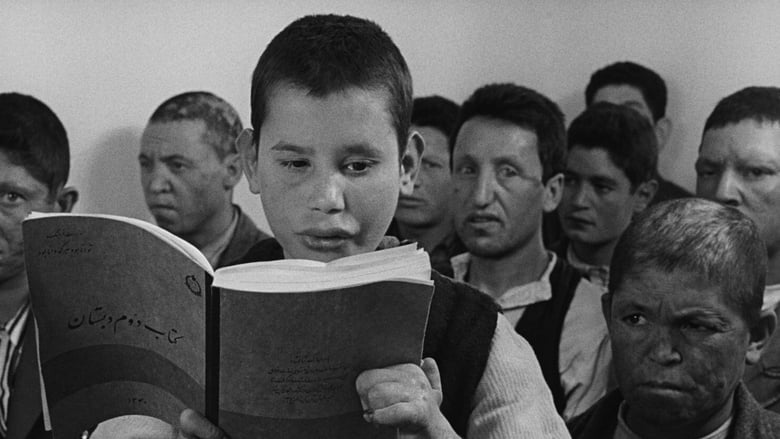
The House Is Black (1963)
Set in a leper colony in the north of Iran, The House is Black juxtaposes "ugliness," of which there is much in the world as stated in the opening scenes, with religion and gratitude.
Watch Trailer
Cast


Similar titles
Reviews
"There is no shortage of ugliness in the world. If man closed his eyes to it, there would be even more." The life of Forugh Farrokhzād, Iranian poet and director, ended tragically too soon at the age of thirty-two concerning a car accident to avoid hitting a school bus, swerving her Jeep into a stone wall and dying before she could reach the hospital. A female divorcée writing controversial Persian poetry with a robust voice of feminism, her work was banned for more than a decade due to the Islamic Revolution. Upon eventually meeting filmmaker Ebrahim Golestan in search of a job from returning to Iran after spending nine months in Europe, she published two more volumes before traveling to Tebriz, the most populated city northwest of Iran, to make a film about Iranians suffering from leprosy. But does a short film such as this display more or less of a powerful message in the time it is given? Let's take a look.Titled 'Kẖạneh sy̰ạh ạst' or 'The House is Black', this twenty-minute film (narrated by Farrokhzād and Golestane) was made in 1963 went on to win several international awards. The film took twelve days to shoot, and the twenty-seven-year-old Farrokhzād became attached to Hossein Mansouri, the child of two lepers, of whom she adopted. Spliced with her narrations from the Old Testament, the Koran and her own poetry, the film was based on the Behkadah Raji colony and remains her only film she directed before her death in 1967. Reviewer Eric Henderson described the film: "One of the prototypal essay films, 'The House is Black' paved the way for the Iranian New Wave". Digging deep to unearth the yearnings of hopeless hearts within the confines of the human spirit, the film relents in holding back to show us in what society has deemed ugly to focus rather on the human condition and the beauty of creation. 'The House is Black' appears easy to summarize but difficult to watch and discuss afterwards. Farrokhzād took a daring risk in filming the shunned outcasts living a day in the life of an ostracized colony - children tossing a plastic ball around a courtyard, a veiled woman looking into a mirror, applying mascara inside her only working eyelid, a shrivel-faced man smoking out of the orifice of his exposed nasal passage devoid of its cartilage, crusted scabrous stumps where important appendages have detached, flies buzzing- are all shown in bleak, naked honesty to the viewers at hand. Hard to watch but short enough to get its point across, it challenges its audience to evoke and awaken new and subconscious concepts of thought and discussion upon viewing: here in the most quintessential places of spectacular suffering whereas some viewers may find the images of these individuals and their lives revolting must look deeper to taste the true flavor of this film and its powerful message therein. Brief though uncomfortably testing, it demands we look beyond the external in bringing to light the true incarceration of these human souls of whom allow their souls to inwardly shine rather than refusing to be squelched by the turmoils of life and the harsh rebuke of others. Harrowing, horrifying but artfully constructed, the film plays out as one of Farrokhzād's poems and possibly as a whispered prayer.
"Khaneh siah ast" or "The House Is Black" is the only directorial effort from Iranian poet Forugh Farrokhzad. She made this 20-minute documentary in her 20s and died in her early 30 in a car accident. The film is over 50 years old when I am writing this and is exclusively in black and white. It shows us male and female people from all age groups who live together in a leper colony. The images are obviously shocking. There is a little bit of explanation early on as, back in the 60s, people were certainly even less familiar with leper than we are today and I dare say most people outside the medical profession do not really know a whole lot about it in 2014 either.For the whole film, the sick speak about their life in a very poetic way that you could be sure most of it was probably scripted, especially looking at the fact that most of them are really low in society and probably did not get a good education if they got any at all. That is also why I do not think this can be classified as a documentary. Their quotes hardly come from themselves. Apart from that, they are also saying their prayers to God. I personally thought this was more about shocking the audience with images than making a somewhat touching piece of movie-making. However, it is certainly positive as this film must have helped (and helps to this day) in making leper more known to people in Iran and around the world. There is not much focus on the people's every day life. It is really much more about how the illness changed them physically and about their words. In the end, we find out why the film is called what it is called. A bit of a random reference, but for me somehow it worked.
Despite their suffering and disfigurement the people in the film are shown to be normal in most respects. They dance, exercise, sing, read out loud, go to school, receive treatment, have families, play with their kids and do all the things people without leprosy do. They are an isolated community however but due to the large numbers of them, we can see that they also have a sense of community.Seeing their diseased bodies is distressing until we realize that even to have this type of life is better than no life at all. The reading from the Koran which is lifted from the Bible speaks of God making us and what a miracle that in itself is. So despite their severe shortcomings, they too have the joys of life.
Quite surprising to see a documentary like this coming from the country Iran. You wouldn't think they would be too happy of showing leper patients and colonies to the entire world but yet this documentary managed to get made and released and is still globally considered to be an important one and is seen as the beginning of Iranian new wave.It isn't really a documentary that tries to tell or story or gets a point across but it's more one that simply shows you things with its images. The visuals tell all you need to know. It shows the effects of leprosy on people of all ages and in all its various stages, also in its most gruesome and devastating forms.It still does provide some information on the disease, to learn the Iranian people about it and make them aware of the decease and the fact that there are leper colonies in the country, in which people are living a normal as possible life and are also receiving treatment and going to school.In that regard this is also somewhat of a more hopeful documentary, rather than a depressing one that shows you unhappy and incredibly sick or suffering people, who are waiting for their deaths. The documentary even makes it very clear that the decease is indeed curable and is not something that is inherited, so it's something that can be banned out completely with time, when taken the right precautions.The hopefulness and thankfulness gets also illustrated by the many Koran lines that got put over the documentary and were delivered by the people with leprosy. In it they thank their God for everything they have. Or is there perhaps some reversed deeper meaning to it, trying to make a statement about the treatment of leper sufferers and the ruling power that puts them in these colonies. But this is something we often assume is the case with any movie/documentary coming out from a country that at the time suffers from an oppressing power or government. Perhaps we shouldn't read too much into it and simply appreciate the documentary for what it clearly is on its surface. Still the movie its very last shot makes me think it was a sort of a protest movie as well.But even when you don't get that out of this documentary or don't want to read too much into things, you should be able than more to appreciate this documentary, since of the entire way it got shot and told. It has some great, beautiful, black & white cinematography, as well as a pleasant quick editing style and directing approach by female director Forugh Farrokhzad, who was better known as an important poet, during and after her lifetime, which ended abruptly in a road accident, only a couple of years after this movie.An unique watch into a leper colony.8/10http://bobafett1138.blogspot.com/


